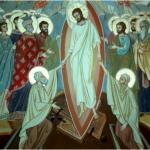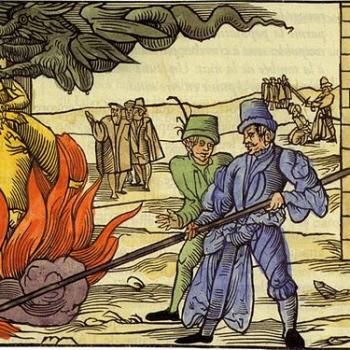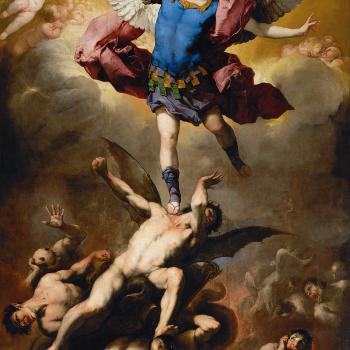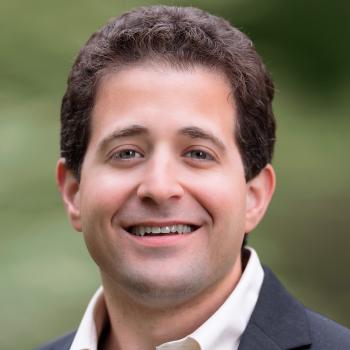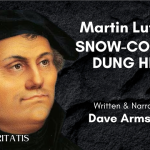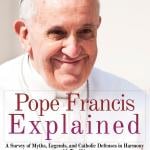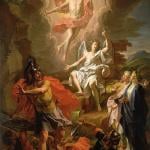Jesus’ Nature Miracles
ST 4145. Miracles 5
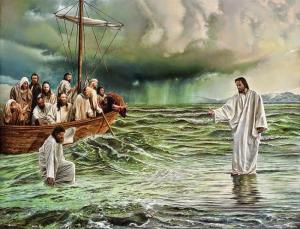
According to Jesus’ nature miracles in the New Testament, nature obeys the commands of the Messiah. The laws of nature and the laws of common sense just seem to evaporate when the Son of Man finds them in his way.
If you run out of wine during a Cana wedding feast, call on sommelier Jesus to convert six jars of water into vintage Cabernet Sauvignon (John 2:1-11). If four thousand or five thousand people are hungry and McDonalds is closed for the weekend, call on chef Jesus to multiply loaves and fishes so all can enjoy a barbecue (Mark 6:38-44). When Jesus misses the boat headed for Bethsaida, he simply walks across the sea on the top of the water without sinking (Mark 6:45-52). The laws and processes of nature that seem stubbornly immutable to you and me are, at most, temporary inconveniences for the Son of God.
Are Jesus’ nature miracles contra-nature? Do they break laws of nature? Do miracles require supernature?
I plan to conclude with this: Jesus’ miracles do not break nature’s laws. Rather, they break into nature from the future. Miracles break into nature with the laws of nature belonging to the new creation, the eschatological kingdom of God. But, before we get to that theological destination, we must follow the winding trail through the natural, supernatural, and supranatural.[1]
What does Augustine say about Jesus feeding 5000 people?
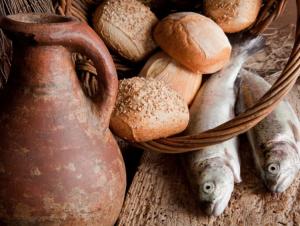
In John 6:1-15, Chef Jesus feeds 5000 people by multiplying five barley loaves and two fish. When all had finished their dinner, the disciples gathered up twelve baskets of crumbs for recycling. Amazing!
In Sermon CXXX, St. Augustine (354-430 AD) asks, “So what’s the big deal? Day in and day out God provides rain and sun and fertilizer for us to grow our food. Now, that’s the real miracle! Feeding a mere 5000 people? It’s hardly worth mentioning.” Well Augustine said something like this.
“It was a great miracle that was wrought, dearly beloved, for five thousand men to be filled with five loaves and two fishes, and the remnants of the fragments to fill twelve baskets. A great miracle: but we shall not wonder much at what was done, if we give heed to Him That did it. He multiplied the five loaves in the hands of them that broke them, who multiplies the seeds that grow in the earth, so as that a few grains are sown, and whole barns are filled. But, because he does this every year, no one marvels. Not the inconsiderableness of what is done, but its constancy takes away admiration of it.”
Let’s put nature miracles into a larger perspective of God’s sustaining of creation. And God’s eschatological promise to transform this creation.
Nature Miracles versus Healing Miracles
In previous Patheos posts, we’ve dealt primarily with healing miracles. NT scholars typically distinguish between Jesus’ healing miracles and nature miracles. But, like Los Angeles street gangs, they’re always ready for a fight over nugacities. So, biblical scholars frequently fight over these terms.[2]
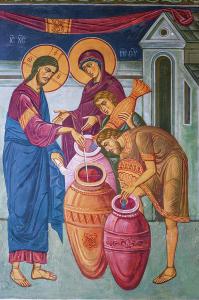
Some scholars say: don’t separate out nature miracles! Why? Because the human bodies Jesus heals are also natural. Gerd Theissen, for example, says the “real contrast is not between nature and human beings, but between things and persons” (Theissen 1983, 115).
Well, whoop de do. I wonder what those two fish were. Trout? Carp? I bet it was Tilapia Galilea. Does it really matter how we classify the fish?
The good news is that Donghwi Kim—whom I introduced in previous Patheos column posts–is not buffaloed by crochety biblical scholars who classify everything with precision calipers. Kim continues “to employ the label ‘nature miracles’” because it is “most useful” (Kim 2023, 299). Whew! It’s the actual miracle account which we wish to study, not a secondary classification.
Perhaps it goes without saying that, whether Jesus gives sight to a blind person or walks on water without drowning, we must ask: what about the laws of nature? In our previous analysis of Hume on Miracles, we tendered a variety of answers.
We can now add Augustine’s answer. Because God graces us day in and day out through the processes of nature, Jesus’ nature miracles are no exception to ongoing divine providence.
Are Jesus’ nature miracles historical?

Kim reports a pervasive misgiving among NT scholars regarding the historicity of Jesus’ nature miracles. Nature miracles are reported in “narratives based to some extent on historical events, but mostly based on later adaptations by early Christianity” (Kim 2023, 305). That is to say, the early Christians may have embellished nature miracle stories as they remembered and retold them.
Curiously, healing miracles and exorcisms get a pass. But nature miracles do not. Kim cites Graham Twelftree.
“While there may be a general consensus that the healing and exorcism stories probably reflect reminiscences of the historical Jesus, this is not agreed in relation to the so-called nature miracles, which have caused scholars considerable angst” (Twelftree 2010, 2543).
Why are Jesus’ nature miracles more suspect? Because healing miracles are ambiguous, as we pointed out in an earlier post, “Two Healing Miracles for Sainthood.” Perhaps Jesus’ healings could be explained as a psychological misunderstanding. Or a spontaneous remission. Or a hallucination. Or some explanation that would not violate Hume’s proscription: miracles dare not violate the law of nature!
But, as we observed in our previous discussions, miracles are historical events. They’re singular. Unique. Unrepeatable. We commit a category mistake when we reduce a unique historical event to a general principle such as a law of nature. Are our NT scholars fearfully cowering in David Hume’s shadow?
Are Jesus’ nature miracles unique?
It certainly is the case that stories of miracles occur in many religious traditions and certanly in ancient legends and modern movies. So, stories of Jesus’ nature miracles are not unique in that sense. In our discussion here the question of uniquess has to do with the so-called uniformity of natural laws and processes. Are Jesus’ nature miracles unique in that sense?
Kim reports a debate I find most curious yet relevant to our larger discussion. On one side of the debate, Jesus’ nature miracle reports are more likely to be true if we have similar reports by other miracle workers. On the other side of the debate, Jesus’ nature miracles are unique and do not require corroborative events. Now, which side are you on?
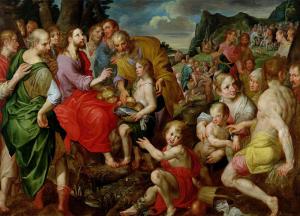
Ambrosius Francken the Elder. Getty Images.
The very popular theologian, Marcus Borg, takes one side. Borg argues that the historical validity of Jesus’ nature miracles depends on parallel miracle workers.
“…if I became convinced that at least a few people have been able to walk on water, then I would be willing to take seriously that Jesus may have done so. But as a historian, I find myself unable to say that the life of Jesus involved spectacular happenings of a magnitude without parallel anywhere else” (Borg 1999, 232).
In short, for Borg, reports of Jesus’ nature miracles cannot be historical because they are unique.
Contra Borg, Craig Keener takes the other side. Keener sees Jesus’ uniqueness as something to be studied rather than discarded.
“If one does not start with the premise that Jesus could not be unique (or at least highly extraordinary), the evidence does suggest that Jesus was sufficiently beyond the normal person for us to investigate unusual questions about him” (Keener 2011, 612).
In short, for Keener, reports of Jesus’ nature miracles are more likely to be historical events because they are unique.
It appears to me that Borg’s judgment has been obnubilated by Hume’s shadow. Borg assumes without investigating that Jesus’ nature miracles can be dismissed because they fail to conform to common experience with nature’s regularities. A proper historical method, in contrast, would be on the lookout for uniqueness because, in principle, every historical event is already unique in that it is singular in time and space.
What is Donghwi Kim’s assessment? “In my view,” writes Kim, “the fact that the historical Jesus differed from the average person of his day (even today) was overlooked in Borg’s prior assumptions” (Kim 2023, 314). If Jesus’ miracles are unique and not subject to nature’s regularities, they can still be studied and verified by historical examination of the evidence.
Kim’s position does not automatically make him a disciple of Keener, however. Why? Because Kim is still willing to grant too much credence to the dominant view among NT scholars.
“It is possible that some kinds of historical cores lie at the heart of these stories, but their origin and development are equally likely to be derived from theological and literary connections made by Jesus’ followers” (Kim 2023, 316).
Even after granting the likelihood of embellishment by the NT church, Kim takes a strong stand against Hume’s fallacy of assuming the consequent.
An honest researcher’s “careful judgment is not based on the assertation that such events as miracles of nature could not happen. Simply put, I would argue that while one cannot reliably establish from historical grounds what actually happened in the nature miracle stories, it should not be ruled out that at least some of the stories may have their origin in reminiscences made by Jesus’ early followers” (Kim 2023, 328-329).
Are Jesus’ nature miracles eschatological?

Do Jesus’ nature miracles inaugurate the eschatological new creation? Yes. At least according to Alan Richardson. Richardson holds that the two feeding miracles in John 6 describe “Christ as the new Moses who gives Bread from Heaven, the new Elijah-Elisha…the Host at the Messianic Banquet in the Kingdom of Heaven, [and] the Host at the eschatological anticipation of the latter in the Church’s Eucharist” (Richardson 1959, 104; 102-103; cited in Kim 332). Instead of breaking nature’s law, God’s future breaks into nature’s processes.
The Cana wine miracle similarly anticipates the messianic banquet to come. At least according to David Blomberg. “The most plausible purpose for Jesus turning the water into wine at this celebration was to show that the final wedding feast between God and his people had begun” (Blomberg 2009, 336; cited in Kim 332).
The cardinal principle in eschatological ontology is that the same God who created the world from nothing is the God who redeems it in the new creation. Even though Jesus’ nature miracles were not in themselves redemptive, the power of the creator God to redeem nature is exhibited in what Jesus does.
Conclusion
Dongwhi Kim’s service to scholarship has been to outline with considerable detail just how issues regarding the historicity of Jesus’ miracle stories are formulated. At each point of debate, Kim then provides his own best judgment. This is the primary reason I brag so loudly about Kim’s accomplishment.
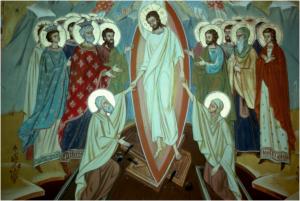
From my own perspective, I find it curious that NT historians exhibit greater suspicion regarding Jesus’ nature miracles than Jesus’ healing miracles. Let alone exorcisms. Perhaps this is due to the long shadow cast by David Hume which frightens them into protecting the invincibility of the laws of nature.
Here is what I think. When we place the laws of nature within a theological context, the laws of nature represent the faithfulness of the creator God over time. God’s faithfulness is experienced by us through the regularity, reliability, and uniformity of nature’s consistency. But these laws are by no means eternal, static, or unalterable. They are contingent. God, the creator of nature’s laws, is ready and willing to alter these laws in the eschatological new creation.
Clearly God has already inaugurated the new creation when raising the dead Jesus on the first Easter. Now, Easter is a nature miracle well worth studying! Let’s attend to Jesus’ resurrection in the next Patheos post.
▓
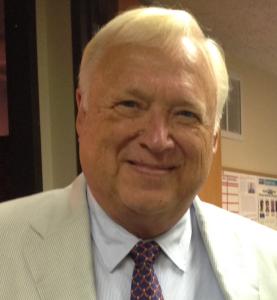
For Patheos, Ted Peters posts articles and notices in the field of Public Theology. He is a Lutheran pastor and emeritus professor at the Graduate Theological Union. He co-edits the journal, Theology and Science, with Robert John Russell on behalf of the Center for Theology and the Natural Sciences, in Berkeley, California, USA. His single volume systematic theology, God—The World’s Future, is now in the 3rd edition. He has also authored God as Trinity plus Sin: Radical Evil in Soul and Society as well as Sin Boldly: Justifying Faith for Fragile and Broken Souls. See his website: TedsTimelyTake.com.
Watch for his new 2023 book, The Voice of Public Theology, published by ATF Press.
▓
Notes
[1] According to the Catholic Encyclopedia, “every miracle is not of necessity contrary to nature, for there are miracles above or outside nature.”[2] Rudolph Bultmann grouped Jesus’ miracles into three categories: healings, exorcisms, and nature miracles (Bultmann 1968). Bultmann averred that in some miracle accounts the apophthegm—the short pithy instructive saying or maxim spoken by Jesus—was more important than the event itself.
Works Cited
Blomberg, Craig. 2009. “The Miracles as Parables.” In The Historical Jesus: Five Views, by eds David Wenham and Craig L Blomberg. Downers Grove IL: IVP Academic.
Borg, Marcus J. 1999. “An Appreciative Disagreement.” In Jesus and the Restoration of Israel: a Critical Assessment of N.T. Wright’s Jesus and the Victory of God, by ed Carey C Newman, 230-235. Downers Grove IL: InterVarsity.
Bultmann, Rudolph. 1968. History of the Synoptic Tradition. New York: Harper.
Keener, Craig. 2011. Miracles: The Credibility of the New Testament Accounts, 2 Volumes. Grand Rapids MI: Baker Academic.
Kim, Donghwi. 2023. Miracles Reconsidered: A Fresh Assessment from Philosophy, Science, and Theology. Graduate Theological Union Ph.D. dissertation: unpublished.
Richardson, Alan. 1959. An Introduction to the Theology of the New Testament. New York: Harper.
Theissen, Gerd. 1983. The Miracles Stories of the Early Christian Tradition. Minneapolis MN: Fortress.
Twelftree, Graham. 2010. “The Message of Jesus I: Miracles, Continuine Controversies.” In Handbvook for the Study of the Historical Jesus, Volume 3, by eds Tom Holmen and Stanley POrter, 2540-2545. Boston: Brill.




